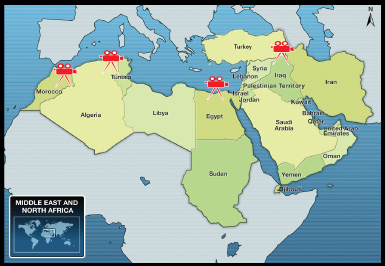

In the ever-evolving world of business, the significance of layout design cannot be overstated. It serves as the visual cornerstone upon which a brand’s identity, message, and content are built off of. Whether in the realm of websites, marketing materials, or product packaging, a thoughtfully crafted layout design plays a pivotal role in captivating audiences. Layout design is used to convey information effectively, along with leaving a lasting impression. This comprehensive exploration delves into the multifaceted importance of layout design for businesses, encompassing its impact on brand perception, user engagement, and content creation across various platforms.
Layout design acts as a powerful medium through which businesses can establish and reinforce their unique visual identity. The strategic arrangement of colors, typography, images, and graphics creates a cohesive visual language. The visual language created by layout design should resonate with your brand’s essence and values. A well-designed layout cultivates recognition. This recognition created by a unique visual identity evokes instant familiarity and trust among your audience. Layout design goes beyond mere aesthetics, because it functions as a non-verbal communicator of a brand’s personality and sets the stage for meaningful connections.
In the digital age, having user engagement is the cornerstone of successful business endeavors. Layout design directly influences how users interact with a website, app, or any digital interface. An intuitive and user-friendly layout ensures seamless navigation. By having a good digital layout, then you can reduce bounce rates and encouraging longer browsing sessions. Effective placement of call-to-action buttons, clear content hierarchies, and visually pleasing aesthetics keep your users engaged with your content. When you can keep your audience engaged, then you can generate higher conversion rates and improved customer retention. Maintaining a well-designed layout creates a harmonious user experience, doing this you can foster trust and encourage return visits from your audience.
Layout design is the canvas upon which various forms of content come to life. Whether it’s a blog post, social media graphic, product catalog, or print advertisement, layout design dictates how information is presented and absorbed. Thoughtful arrangement of text and visuals enables content to be comprehensible and appealing, which in turn facilitates effective communication. A balanced layout guides the reader’s eye through your content. You can guide users using highlighted key messages and directing them through the narrative of your content. In the realm of content creation, having a compelling layout design enhances readability, captures attention, and ultimately conveys the intended message more persuasively.
Consistency is a hallmark of successful businesses, and layout design plays a crucial role in maintaining a consistent brand image. A cohesive layout design unifies all branded materials. The materials your business can use can range from digital assets to print collateral. By having a consistent design to these materials, then you can ensure a seamless experience for audiences across different touchpoints. Whether a customer encounters a social media post, a website landing page, or a physical brochure, a consistent layout design reinforces brand recall and reinforces a sense of professionalism and reliability.
With the proliferation of digital platforms and devices, businesses need layout designs that adapt seamlessly across various screens and mediums. Using responsive layout design ensures that content retains its visual appeal and functionality regardless of screen size or other mediums. Making sure a page has visual appeal regardless of whether it’s viewed on a desktop, tablet, or smartphone is vital for businesses. This adaptability not only enhances user experiences but also broadens a business’s reach, because of this reach it enables businesses to connect with audiences wherever they may be.
In the intricate tapestry of modern business, layout design is a versatile and impactful tool that extends far beyond aesthetics. It is the gateway through which businesses create compelling visual identities, engage users, communicate messages, and maintain brand cohesion. A well-designed layout enriches content, making it more accessible and appealing. Layout design also helps foster a sense of trust and credibility for a business. As businesses strive to make meaningful connections with audiences in a competitive landscape, investing in thoughtful and strategic layout design emerges as a pivotal step towards elevating brand perception, driving engagement, and ultimately achieving sustained success.